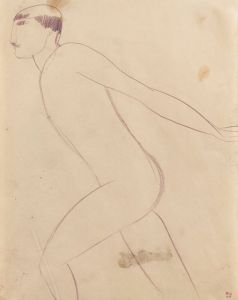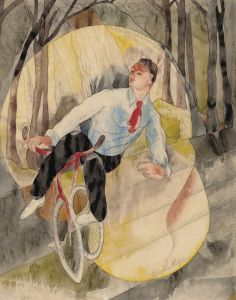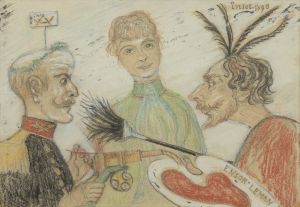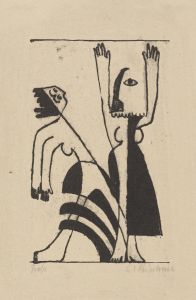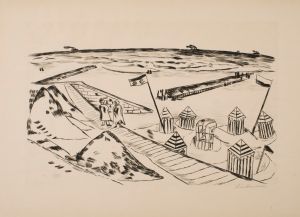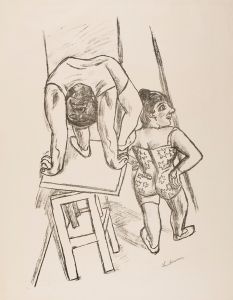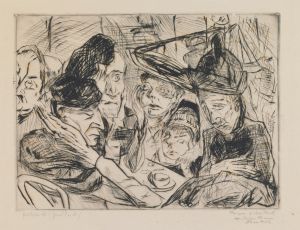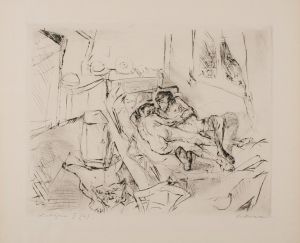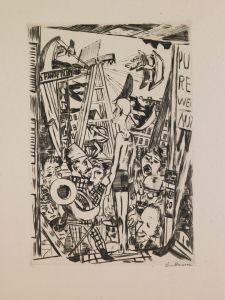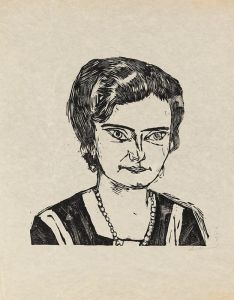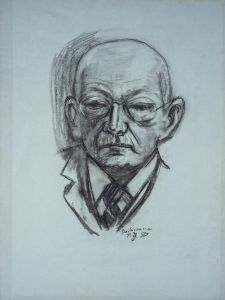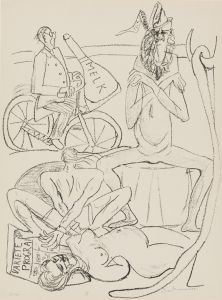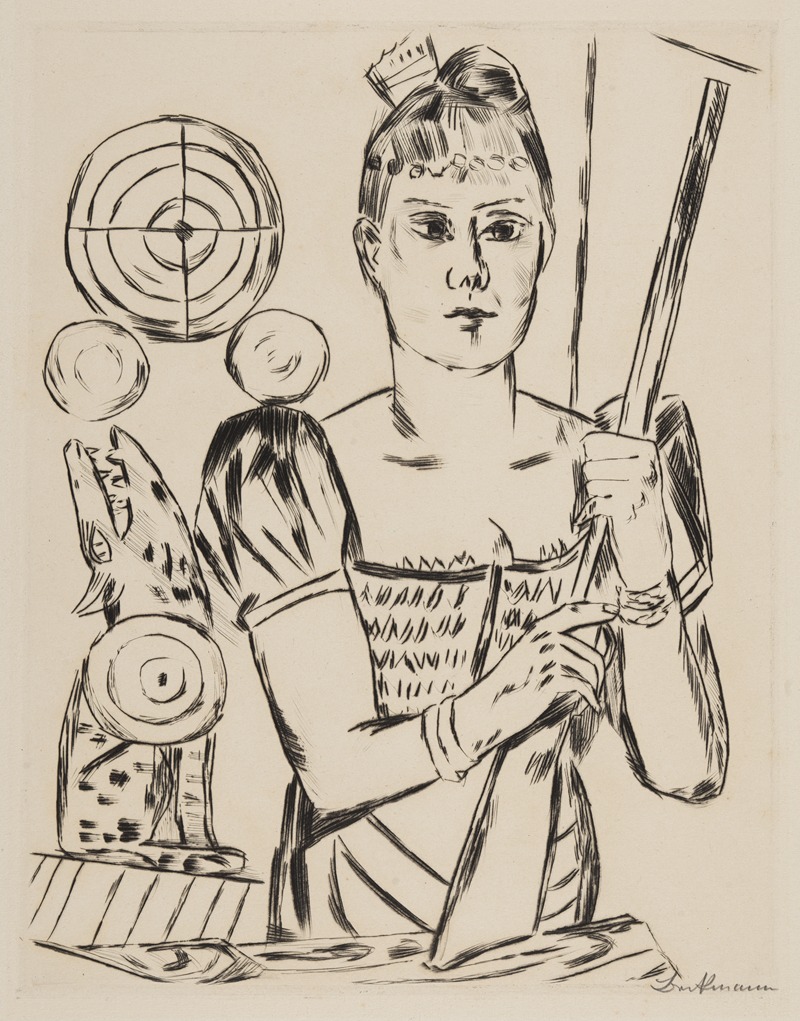
Schießbude
A hand-painted replica of Max Beckmann’s masterpiece Schießbude, meticulously crafted by professional artists to capture the true essence of the original. Each piece is created with museum-quality canvas and rare mineral pigments, carefully painted by experienced artists with delicate brushstrokes and rich, layered colors to perfectly recreate the texture of the original artwork. Unlike machine-printed reproductions, this hand-painted version brings the painting to life, infused with the artist’s emotions and skill in every stroke. Whether for personal collection or home decoration, it instantly elevates the artistic atmosphere of any space.
Max Beckmann's "Schießbude," translated as "Shooting Gallery," is a notable work by the German painter, created in 1929. Beckmann, an influential figure in the New Objectivity movement, is renowned for his vivid and often complex portrayals of the human condition, and "Schießbude" is no exception. This painting is a significant example of his work during the Weimar Republic era, a period marked by social upheaval and artistic innovation in Germany.
"Schießbude" captures the essence of a carnival shooting gallery, a popular form of entertainment in the early 20th century. The painting is characterized by its bold colors, dynamic composition, and the interplay of figures and objects, which are hallmarks of Beckmann's style. The scene is bustling with activity, featuring a variety of figures engaged in the act of shooting or observing, each rendered with Beckmann's distinctive use of exaggerated forms and expressive lines.
The painting reflects Beckmann's interest in the themes of chance, fate, and the human experience, common motifs in his work. The shooting gallery serves as a metaphor for the unpredictability of life, where participants take aim at targets, hoping for success amidst uncertainty. This theme resonates with the broader context of the Weimar Republic, a time of political instability and economic challenges in Germany, which Beckmann often explored in his art.
Beckmann's use of space and perspective in "Schießbude" is particularly striking. He employs a compressed, almost claustrophobic composition that draws the viewer into the scene, creating a sense of immediacy and engagement. The figures are depicted in various poses, some in motion, others in contemplation, each contributing to the overall narrative of the painting. The vibrant palette and dynamic brushwork further enhance the sense of energy and tension within the scene.
"Schießbude" is also notable for its reflection of Beckmann's personal experiences and worldview. Having lived through the tumultuous events of World War I and its aftermath, Beckmann's art often grapples with themes of existential uncertainty and the search for meaning. The carnival setting of "Schießbude" can be seen as a microcosm of society, where individuals navigate the complexities of life, confronting both their desires and fears.
This painting is part of Beckmann's broader oeuvre, which includes a wide range of subjects and styles, from portraits and still lifes to large-scale triptychs. His work is characterized by a unique blend of realism and abstraction, often infused with symbolic and allegorical elements. "Schießbude" exemplifies Beckmann's ability to capture the essence of his time while also addressing universal themes that continue to resonate with audiences today.
Max Beckmann's "Schießbude" remains an important work within the canon of 20th-century art, reflecting both the specific historical context of its creation and the enduring human themes that Beckmann so masterfully explored. The painting is a testament to his skill as an artist and his profound understanding of the complexities of the human condition.





